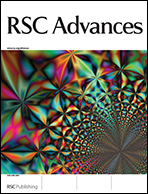We present a new device structure for effective energy harvesting from human body movement using a ZnO nanogenerator. This is the first report on both piezoelectric and triboelectric effects in the same device. The fabricated device structure consists of a double-sided ZnO nanowire array sandwiched between gold coated ZnO nanowire arrays using polydimethylsiloxane. The peak open circuit voltage (Voc) and short circuit current (Isc) were recorded as 30 V and 300 nA respectively with power density of 0.390 mW cm−2, when folding/bending the nanogenerator with the fingers. The ZnO nanogenerator was effectively utilized to harvest biomechanical energy from human body movements like stretching, folding, and pressing. The power density of fabricated nanogenerator was 9.49, 8.19 and 115 nW cm−2 by stretching, folding and pressing the fingers, respectively. The acquired output was used to drive a commercial light emitting diode. The generated output is combination of the piezoelectric effect from ZnO nanowire and the triboelectric effect from polydimethylsiloxane. This feasibility study substantiates human body movement as a source for energy harvesting. The energy generated by human activities (body movement) was sufficient to operate low power wearable electronic devices.

You have access to this article
 Please wait while we load your content...
Something went wrong. Try again?
Please wait while we load your content...
Something went wrong. Try again?


 Please wait while we load your content...
Please wait while we load your content...